This is the first in a series of posts I’d like to call “What I learned in Music Theory 1”. I took this class in Santa Monica College recently and had a great experience and a great professor. Highly recommended. He showed us a few diagrams that make so much sense and make learning a breeze. I’ll try to share some of the things I’ve learned.
Intro and tl;dr
Circle of fifths, eh? What it is, why, the story… there’s always Wikipedia for all this. For the purposes of this discussion, the circle of 5ths helps you figure out how many sharps or flats are in a major or minor scale, and also which ones. That’s all.
I’ve seen several videos and read several explanations of the phenomenon known as “circle of fifths” but none of them stuck. This one that you’re going to see did stuck. It’s also different than any other one I see when searching for images on the web. I mean look at this. None of these images have C♯ and C♭ at the bottom.
Anyway, to cut a long story short… here’s the final result:

Now let’s see how you draw this yourself…
Before we begin, memorize this: Fat Cats Go Down And Eat Breakfast. Got it?
DIY: a circle and some fifths
Unsurprisingly you start with a circle…
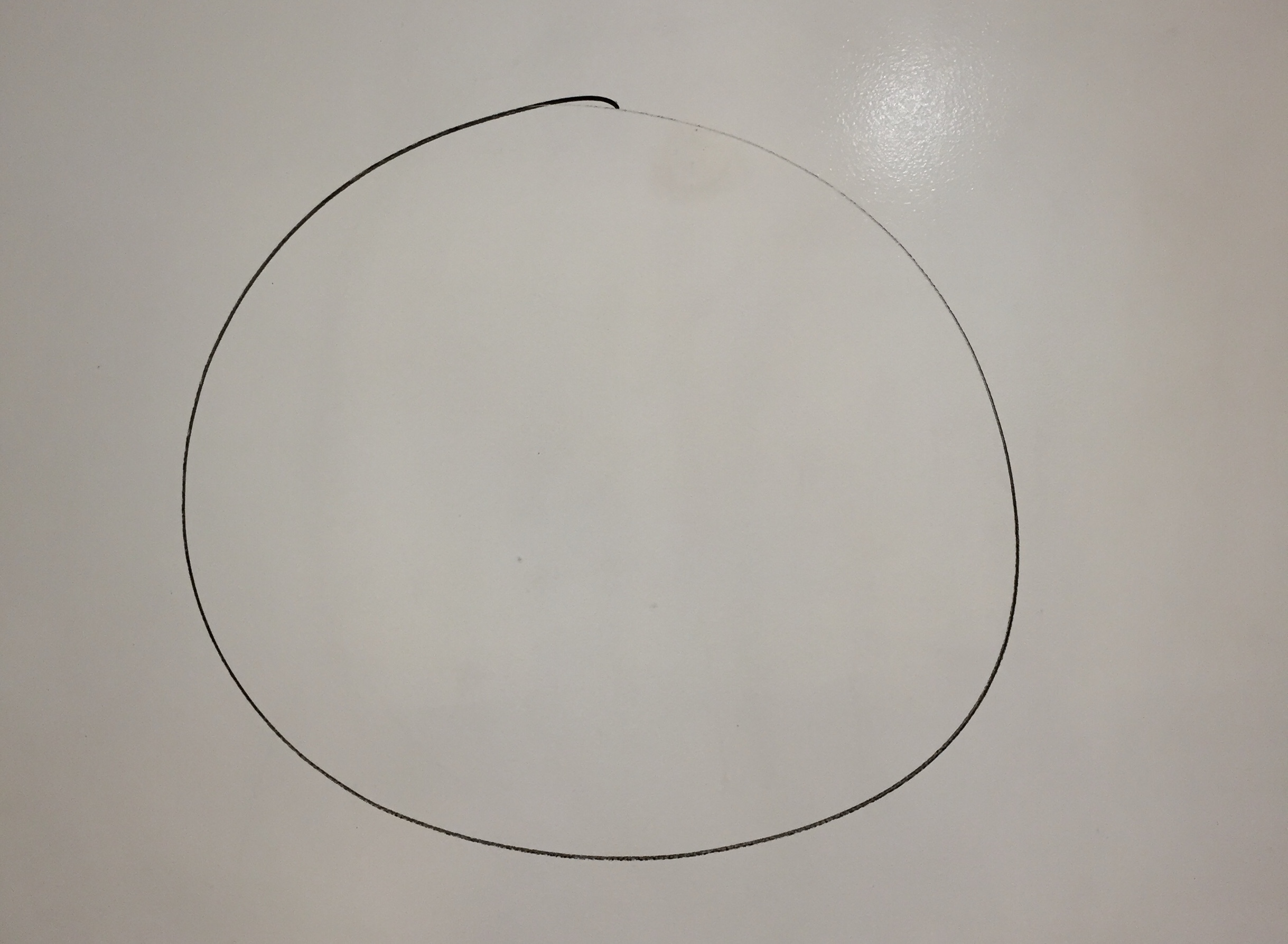
You split the circle in half. The right-hand side is the sharp (♯) side and the left is the flat (♭).

Do your best to split the right-hand (sharp) side with six ticks. If you imagine a vertical line through (like the earth’s equator), three ticks should be in the upper half (north) and three in the lower (south). I say “do your best”, but there’s no need to break a finger (you need those for playing!) trying too hard. Doesn’t matter all that much.
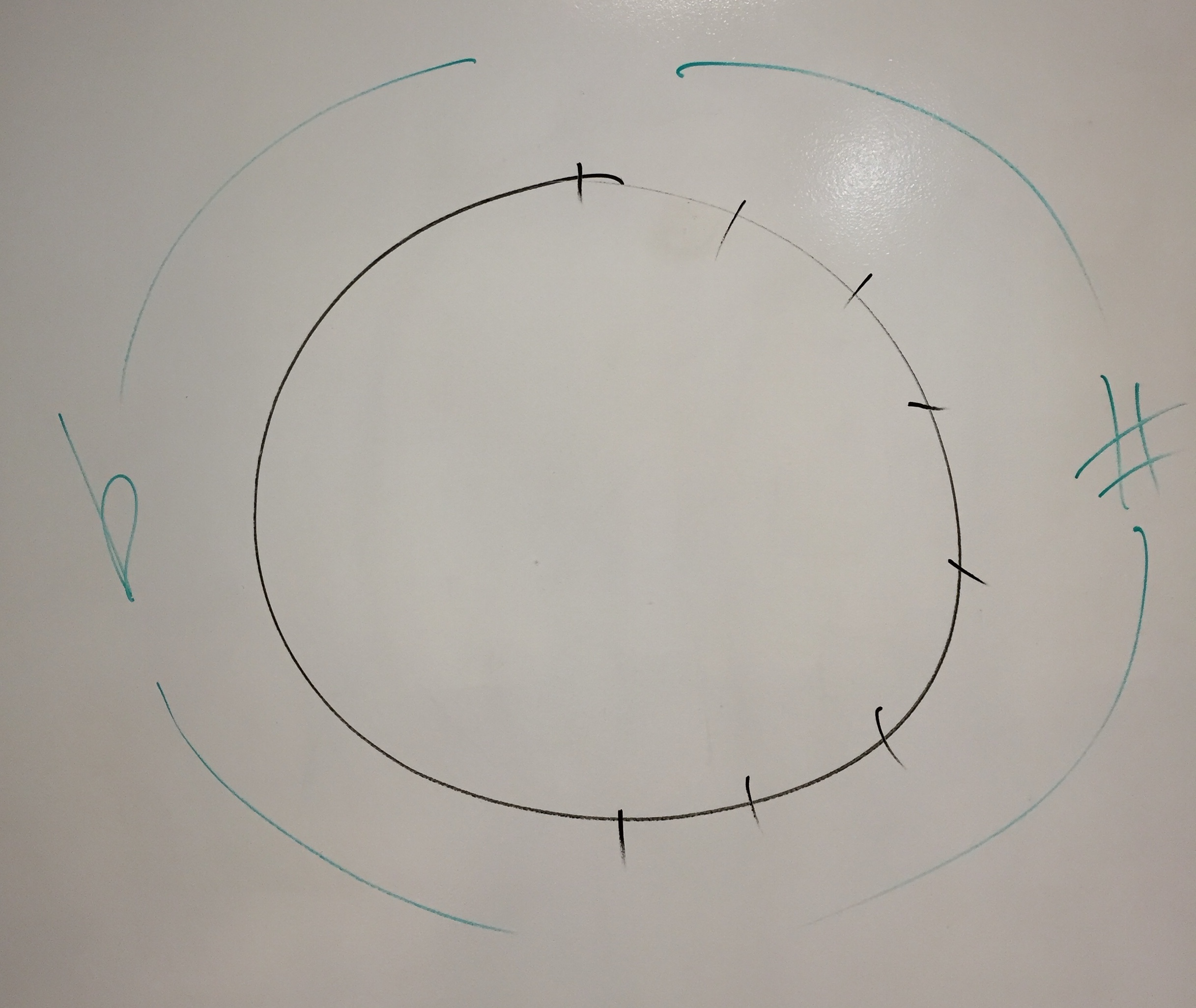
Same thing (6 ticks) go on the left (flat, aka East) side.
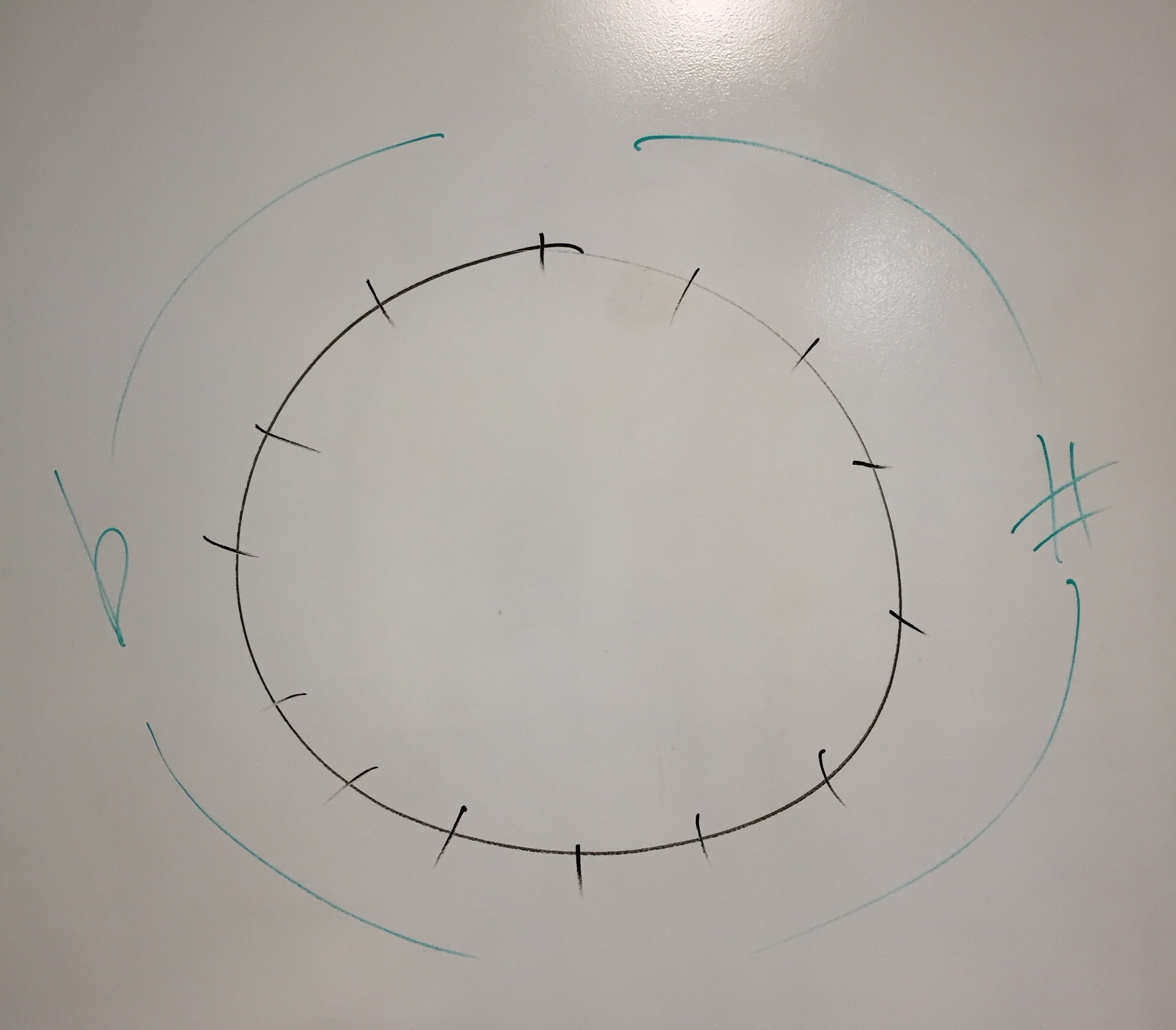
Now the North pole becomes C, while the South pole is both C♯ and C♭. C major scale has no sharps, nor flats (all white keys) on the piano. C♯ has all sharps and C♭ has all (7) flats.
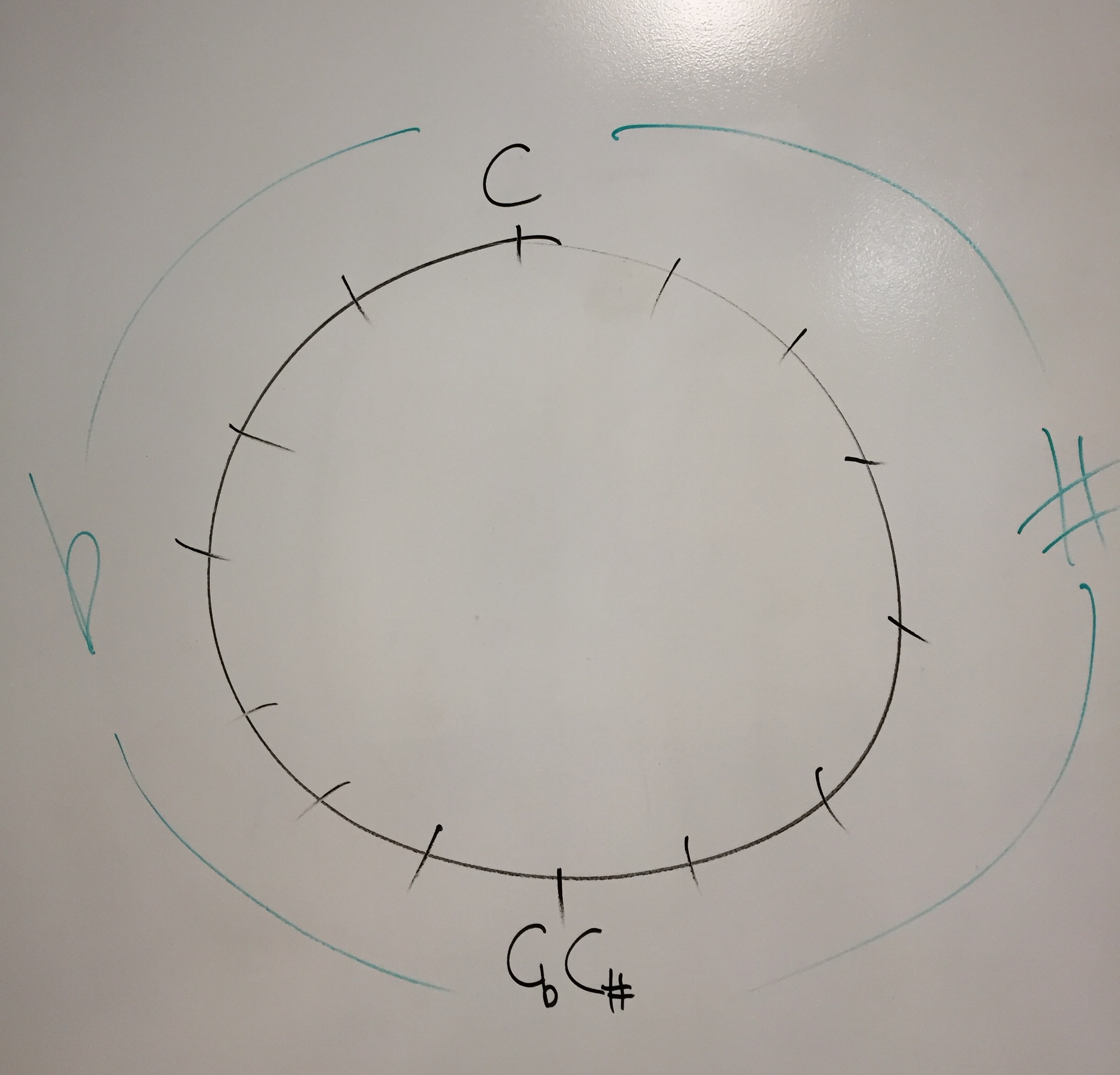
Next you need to put all other notes on the circle. They are all a 5th apart (not that it matters). How do you know where to put them? That’s where the magical FCGDAEB comes into the picture. How are you going to remember? Fat Cats Go Down And Eat Breakfast.
Write these magical letters somewhere while mumbling…. Fat. Cats. Go. Down. And. Eat. Breakfast.
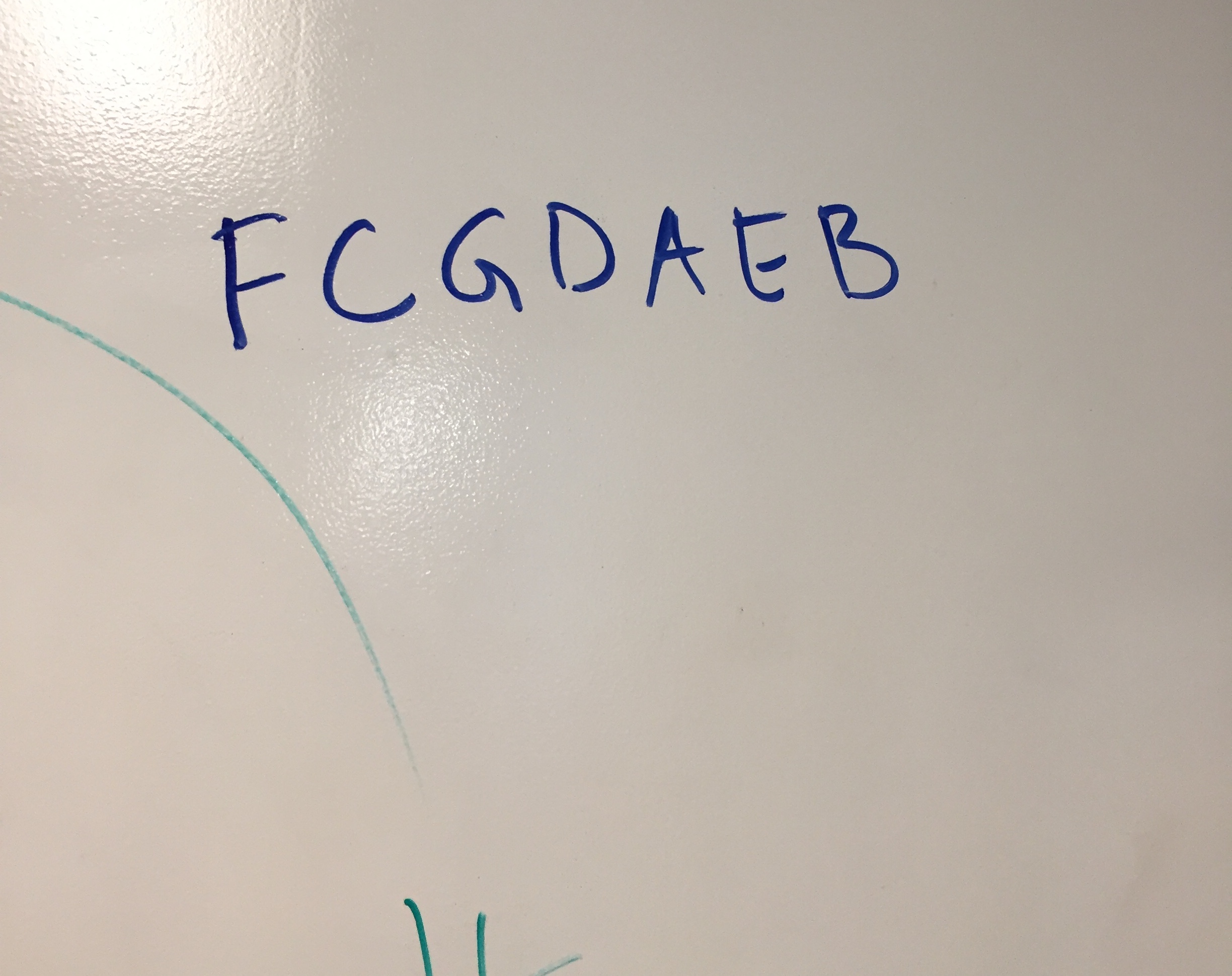
Then write the same “Fat cats…” only backwards. BEADGCF.

Beautiful. Check if you’ve made a mistake. Fat… cats… go… down… and… eat… breakfast. K.
You already have C (cat), so add the F (fat) right before it. Fat cat.
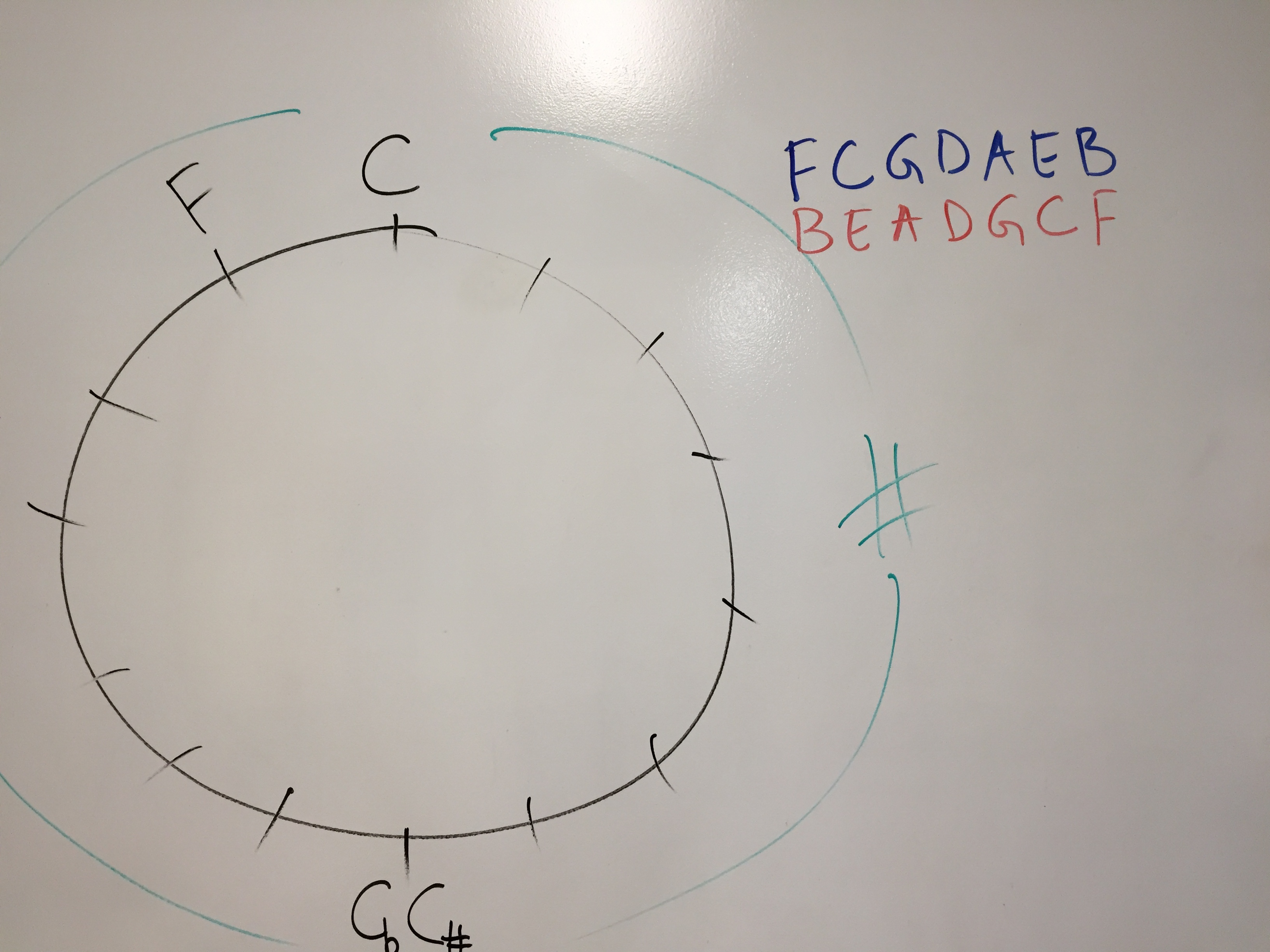
Keep going… G, D, A, E, B.
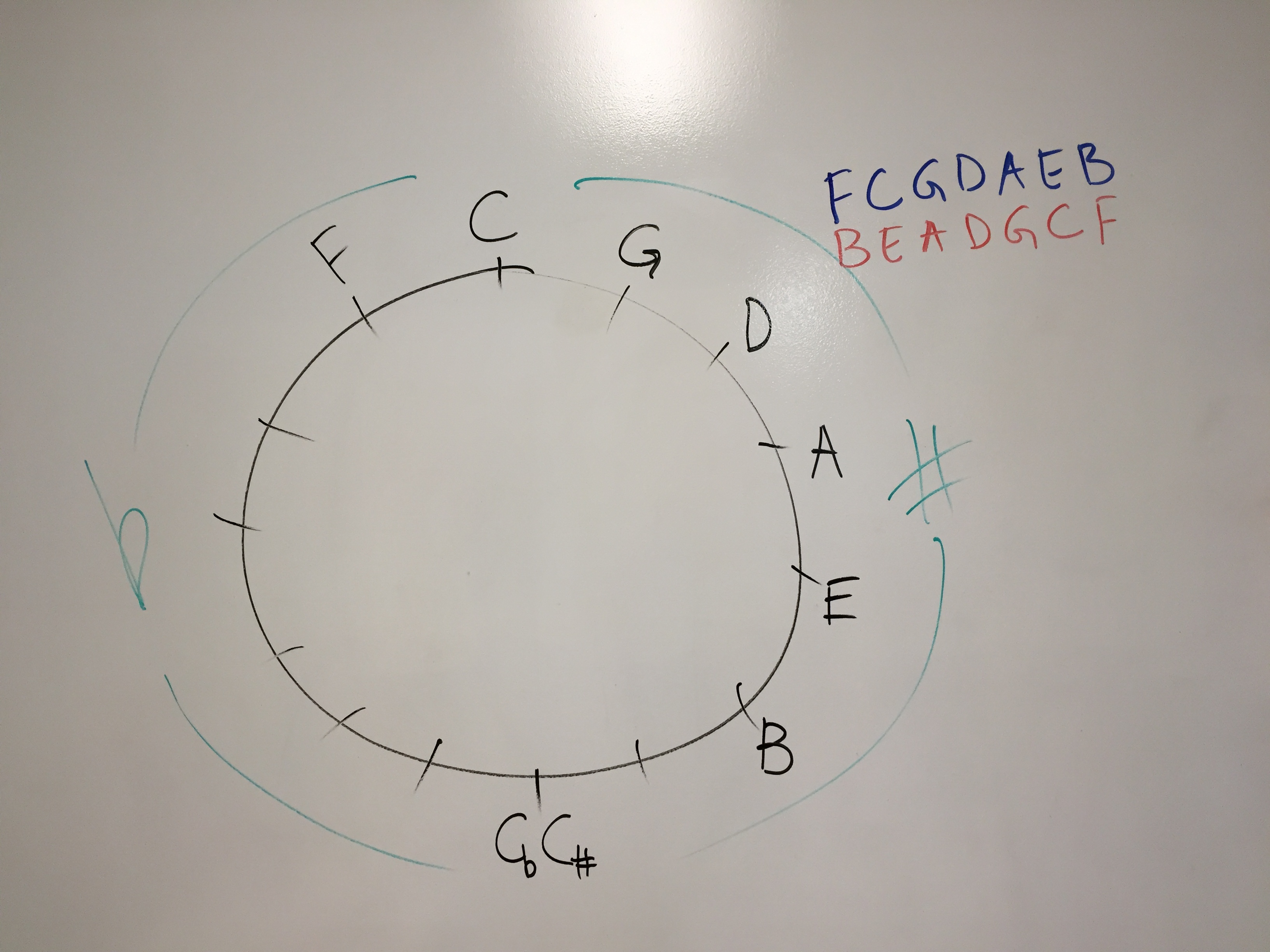
Now you’ve run out of letter. Start over. But because you already have an F, you need a sharp or a flat. And since you’re still on the Sharp (right-hand) side, make it an F♯.

Next, keep going with the fat cat. You run out of letters (Breakfast) right on time.

But since you already have FCGDAEB and you cannot repeat yourself and you’re on the flat side, you make these new ones flat. G♭, D♭, A♭, E♭, B♭.
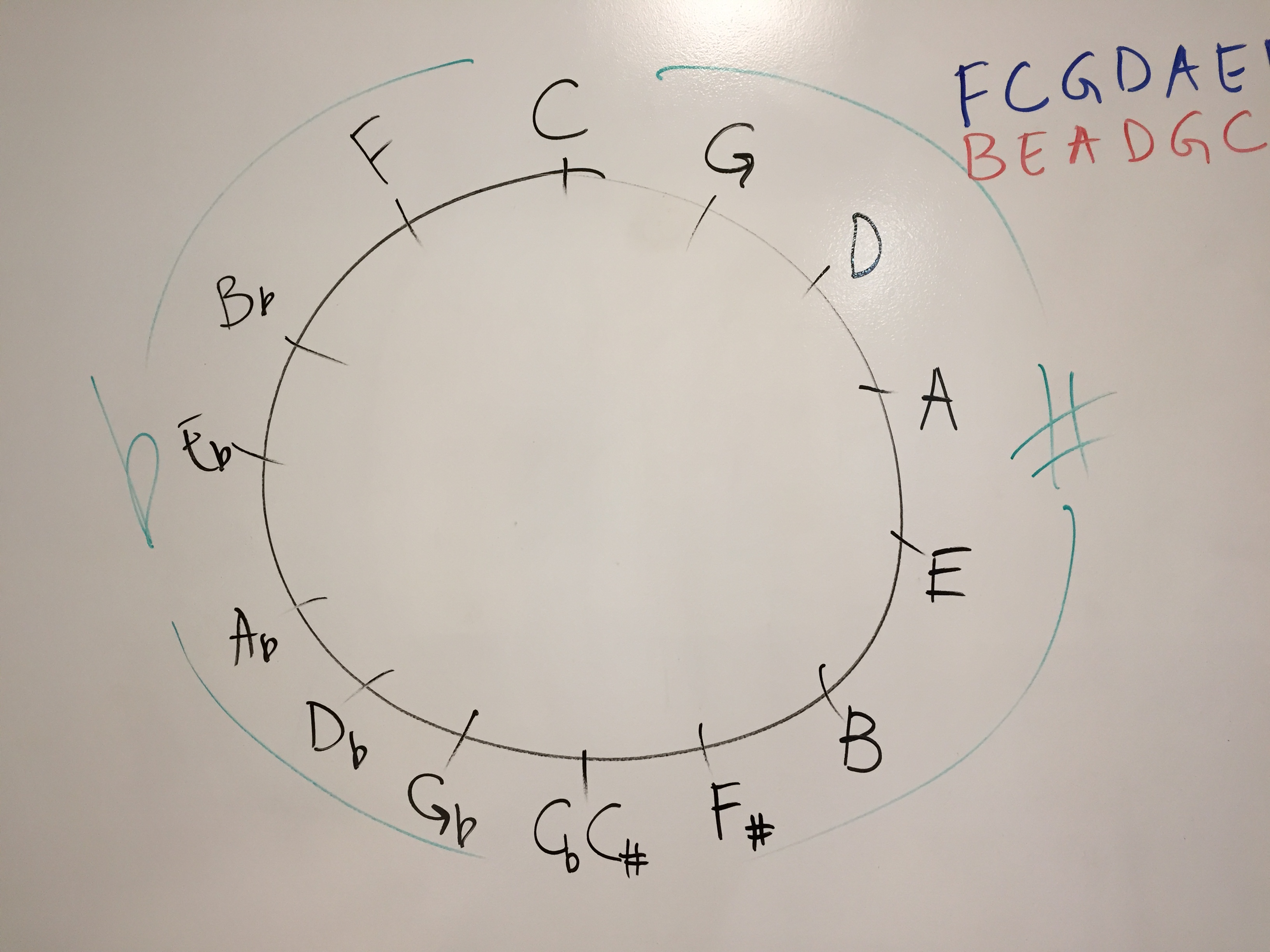
Done with all the letters. These are all the major scales there are. If someone asks for something not on the circle, like G♯, you tell them they are an imbecile and give them A♭ which is on the circle.
As I said, done with letters, now you need some numbers.
Start with the North pole, the C. C has no flats. Nor sharps. In other words 0 sharps and 0 flats. So 0 it is.
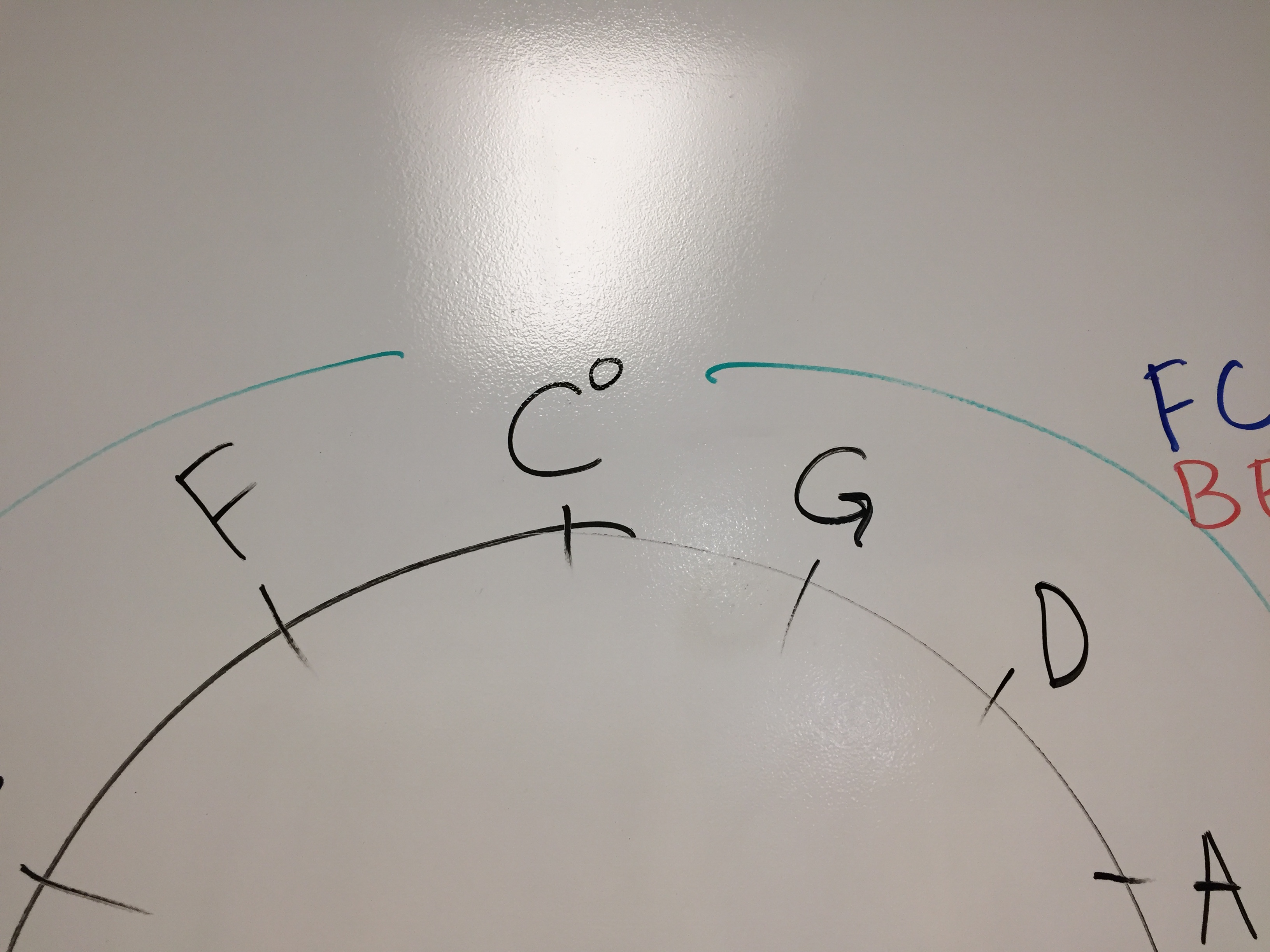
Now you start with the circle and write consecutive numbers 1, 2, 3, 4, 5, 6, 7. The letter G gets a 1, D is 2 and so on. Easy-peasy.
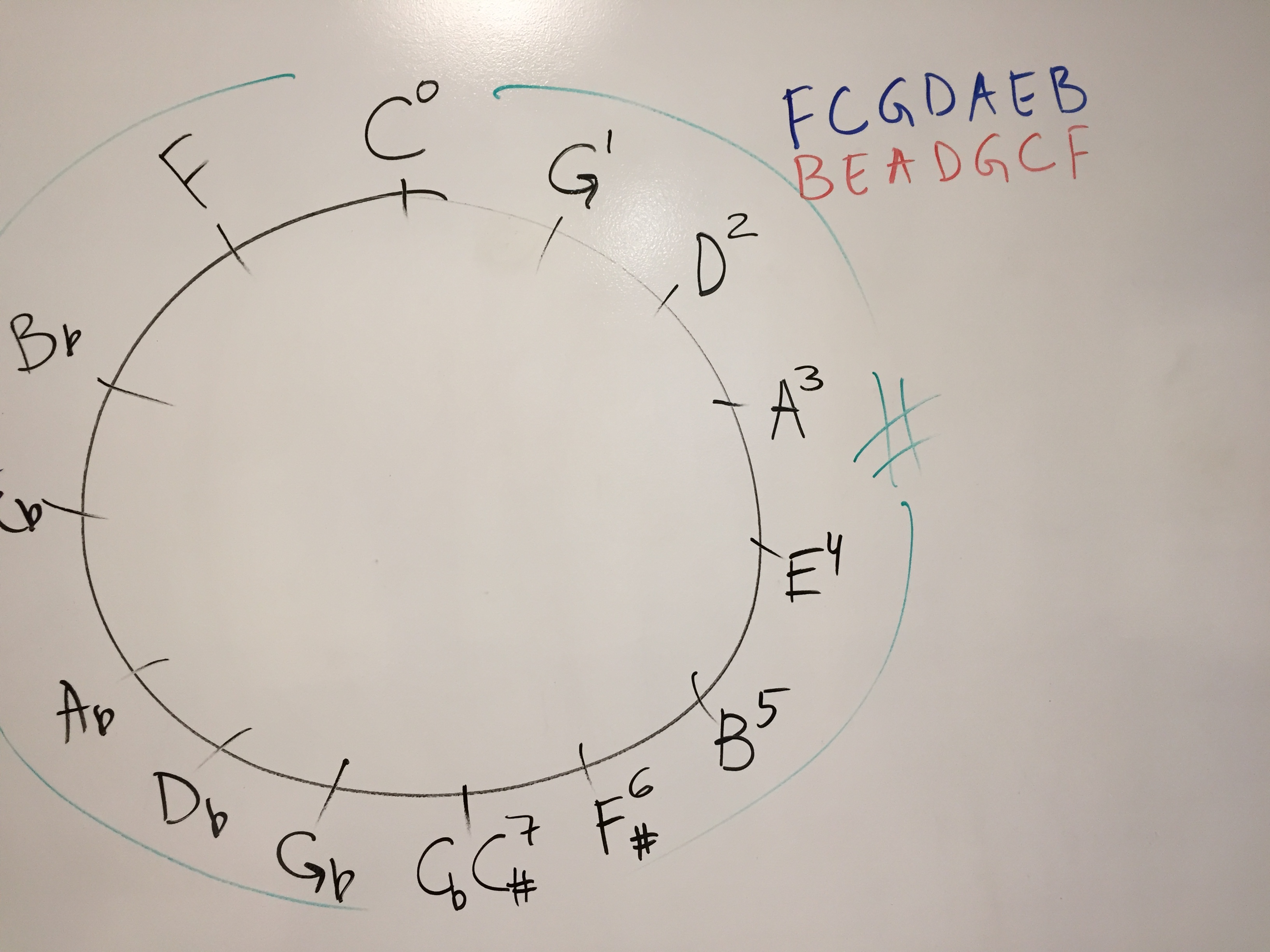
C♯ has all 7 sharps, C♭ has all 7 flats. Write 7 then for C♭ too.
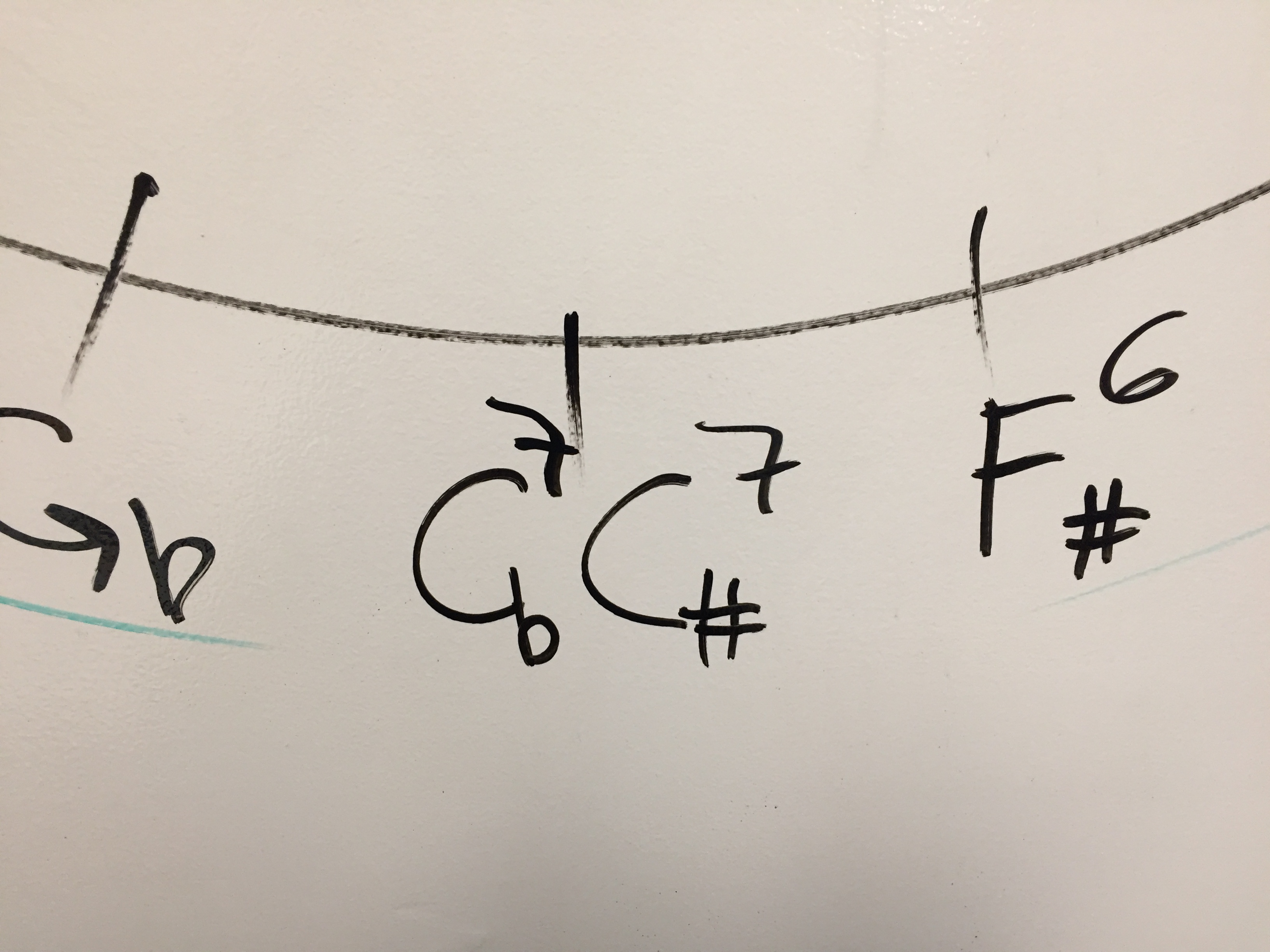
Fill out the rest with 1, 2, 3, 4, 5, 6. Or if you want to count backwards – 6, 5, 4, 3, 2, 1, up to you.

Voilà, le circle est complet!
Probably messed it up in French, but I mean – there you go, the circle is complete.
Practice drawing this yourself. Fat cat… and so on. 1 to 7.
In the next post you’ll see how to use the circle you just drew.
Great stuff, Stoyan! Very well written, and explained, thanks!